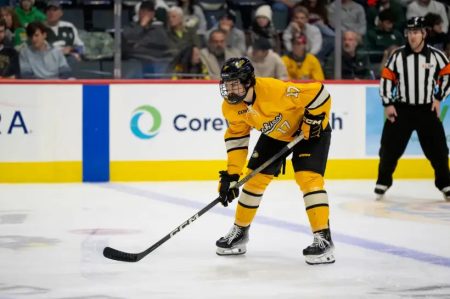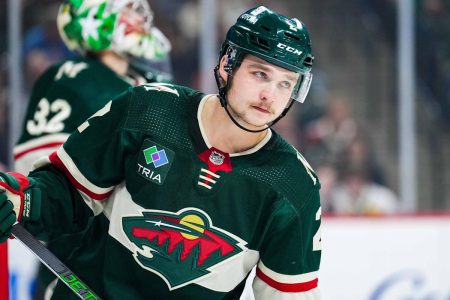A Seller’s Market in Full Swing
The NHL trade deadline this year has showcased an unprecedented seller’s market, where teams are willing to part with significant assets to bolster their rosters. On Wednesday, the Tampa Bay Lightning made a bold move, trading two first-round picks, a second-round pick, and forward Michael Eyssimont to the Seattle Kraken in exchange for forwards Yanni Gourde and Oliver Bjorkstrand, along with a 2026 fifth-round pick. Gourde, a 33-year-old who joined the Kraken in the 2021 expansion draft, has contributed six goals and 17 points in 36 games this season. Bjorkstrand, 29, was a cap dump from the Columbus Blue Jackets in 2022 and has scored 16 goals and 37 points in 61 games this year, with a cap hit of $5.4 million for one more season. Both players were instrumental in the Kraken’s only playoff run in 2022-23. The steep price for these players is indicative of a market where the value for established NHL talent is at an all-time high, leaving many fans and executives to reassess their strategies.
The Pittsburgh Penguins’ Dilemma with Rickard Rakell
Pittsburgh Penguins fans are now speculating about what President of Hockey Operations and General Manager Kyle Dubas can fetch for top winger Rickard Rakell, given the current market dynamics. Rakell, 31, is having a career year with 29 goals and 53 points in 63 games. His previous best came in 2017-18 with the Anaheim Ducks, when he scored 34 goals and 69 points in 77 games. The comparison to the Gourde and Bjorkstrand deal is compelling: if two first-round picks are the price for those players, what could Rakell, a superior player, bring in return? The possibilities are vast, ranging from a first-round pick, a top prospect, and perhaps a young, NHL-ready talent. However, the decision to trade Rakell is not as straightforward as it might seem, given the Penguins’ ongoing rebuild and the team’s longer-term goals.
Balancing Rebuilding and Contending
The Penguins are attempting to rebuild on-the-fly, a strategy that involves a delicate balance of trading assets for future returns while maintaining competitiveness. They have already made significant moves, such as trading Michael Bunting and a 2026 fourth-round pick to the Nashville Predators for defenseman Luke Schenn and center Tommy Novak. Novak, 27, has similar production to Bunting and is signed for two more years at a reasonable $3.5 million. He can slot into the third-line center position or play in the top six, providing immediate value to the team. However, the rush to deal Rakell should be approached with caution. Beyond this season, Rakell has three years remaining on a team-friendly contract that pays him $5 million annually. With the salary cap expected to rise by $7.5 million this summer, Rakell’s contract will become even more attractive, potentially increasing his value in a summer trade.
The Case for Keeping Rakell
Keeping Rakell around might make more sense than initially thought. Despite the prevailing belief that he is at his peak value, Rakell’s history and the rising cap suggest otherwise. Over his career, Rakell has hit the 30-goal mark twice and has six seasons of 20 or more goals. His dips in production, including last season’s 15 goals and 37 points, can be attributed to injuries and the lack of an elite playmaking center. When healthy and supported by a playmaker like Sidney Crosby, Rakell is a proven sniper and goal-scorer, a crucial asset for a team like the Penguins that has struggled with finishing. Given his performance and contract, Rakell’s value is likely to remain high, making him a valuable piece for the Penguins’ rebuild and potential playoff runs in the near future.
The Penguins’ Future Plans
The Penguins have set their sights on contending again in 2026-27, and their strategies reflect this ambition. They have a robust prospect pool in Wilkes-Barre/Scranton (WBS), their AHL affiliate, with players like Ville Koivunen, Tristan Broz, Rutger McGroarty, Harrison Brunicke, and Sergei Murashov poised to make the NHL leap. The organization also holds a wealth of draft picks over the next three seasons, including 15 selections in the first three rounds, which could net them high-value players. Dubas has indicated that they won’t use all their draft picks, keeping some in reserve for leverage in trades for young, elite talent. With these resources, the Penguins are positioning themselves to capitalize on their rebuild and return to contention within the next few years.
Making the Right Move
Given the high market value and the Penguins’ strategic goals, Dubas’s asking price for Rakell should remain high. A fair return should include a first-round pick, an NHL player, and a top prospect. If he cannot secure this value, it might be prudent to retain Rakell for his remaining three years, allowing the Penguins to maintain their competitive edge while continuing to build for the future. The "biggest" return isn’t always the "right" return, especially in a seller’s market. The Penguins need to ensure that any trade for Rakell aligns with their long-term vision and provides concrete value for their on-the-fly rebuild.











